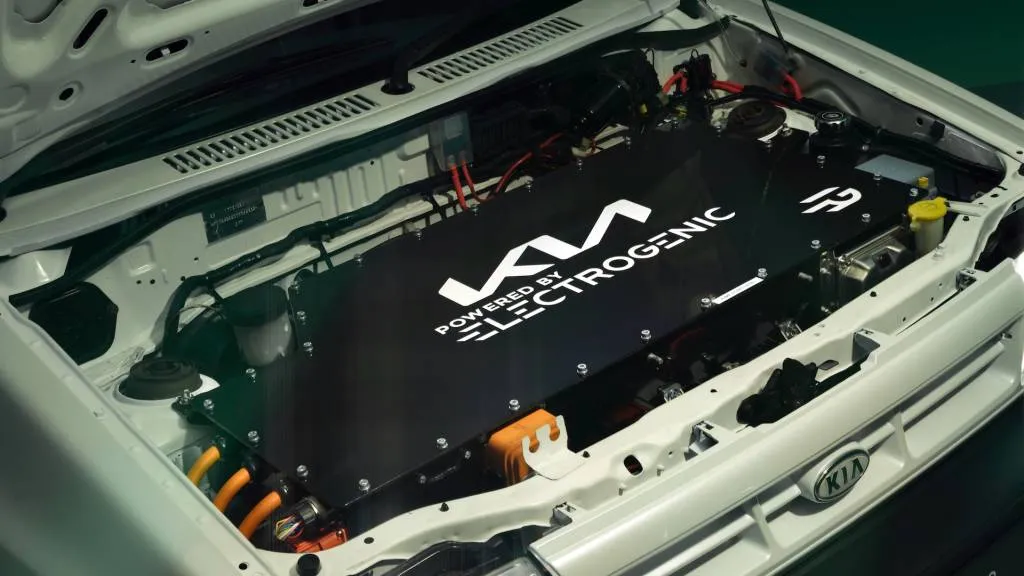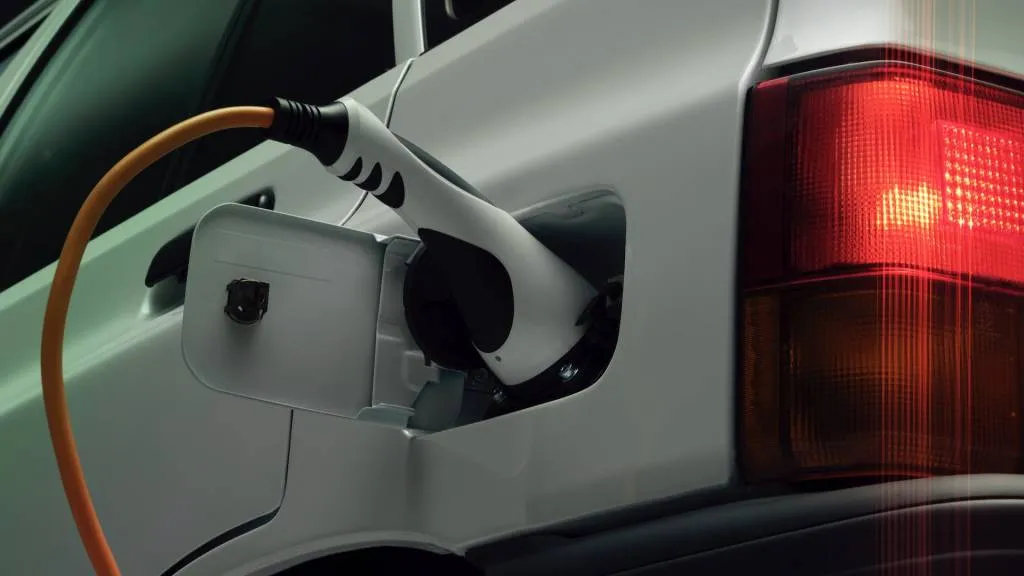[ad_1]
- Kia marks its 80th anniversary
- The company has undertaken an electric conversion of its Pride hatchback
- The revamped model features dual 10-kwh batteries, offering a range of up to 120 miles
This year, Kia is celebrating its 80th anniversary, and in honor of this milestone, the automaker’s U.K. branch has commissioned an electric restomod version of the modest Pride hatchback.
The electric conversion was carried out by Electrogenic, a U.K. company that specializes in retrofitting classic vehicles like the Citroën DS with electric powertrains. Although the Kia Pride may lack the prestige of the DS, it holds significant historical value for Kia.
Kia began its journey in 1944 as a bicycle parts manufacturer called Kyungsung Precision Industry (the name was changed to Kia Industries in 1952) and produced its first car, the Kia Brisa, in 1974. However, the Kia Pride was the model that established the brand’s presence on the global stage. Known internationally as the Mazda 121, it was marketed in the U.S. as the Ford Festiva between 1988 and 1993 (later updated to the Aspire).

1996 Kia Pride EV conversion
The base vehicle for the project was a 1996 Kia Pride 1.3 LX five-door hatchback, sourced from Kia’s U.K. heritage collection. According to Electrogenic, the car retains its original exterior—including the compact 12-inch wheels—and no permanent modifications were made to its structure, meaning the conversion can be undone if needed.
Despite replacing the original 1.3-liter inline-4 engine, which produced 60 hp and 87 lb-ft of torque, with an electric motor, the new Pride EV now delivers a substantial boost in performance. It offers 80 hp and 130 lb-ft of torque in Auto mode and 107 hp with 173 lb-ft in Sport mode, reducing the 0-62 mph acceleration time from the original 19.8 seconds to around 8.0 seconds. A more energy-efficient Eco mode aligns its output with that of the gasoline engine.
Power is directed to the front wheels through the original 5-speed manual transmission, which has been upgraded with a performance clutch to accommodate the increased torque from the electric motor. The Eco and Sport modes limit regenerative braking, allowing drivers to utilize the manual transmission more effectively, while Auto mode incorporates more regenerative braking, simulating the driving experience typical of conventional electric vehicles.

1996 Kia Pride EV conversion
This electric conversion is powered by two 10-kwh battery packs—one located under the hood and another positioned beneath a slightly elevated cargo floor—allowing for a maximum range of 120 miles when driven conservatively in Eco mode, as noted by Kia. The vehicle is equipped with a 3.3-kw charger, discreetly placed beneath the standard fuel filler flap, which can fully recharge the batteries in about six hours.
Despite the added weight from the batteries, the Pride EV’s total weight is just 1,918 pounds, only slightly heavier than the original model at 1,873 pounds. This demonstrates that, although it is challenging to keep the weight down in EV conversions, it is not unfeasible. U.K.-based Bedeo has also claimed that its Land Rover EV conversions maintain a low weight.
Kia is not alone in reviving classic vehicles as electric restomods. Its parent company, Hyundai, has similarly transformed its early Pony hatchback—its first-ever design—and the luxurious Grandeur sedan from the 1980s into EVs. Additionally, in 2023, a group of apprentices at Audi’s Neckarsulm plant in Germany converted a vintage NSU Prinz 4 from one of the company’s predecessor brands into an electric vehicle to commemorate 150 years of production at the facility.
.
[ad_2]
